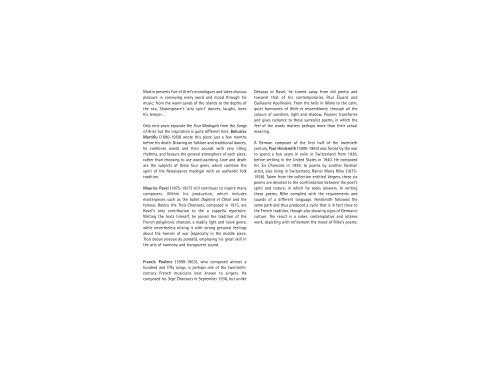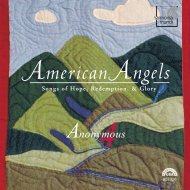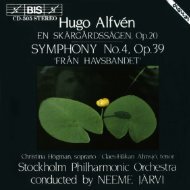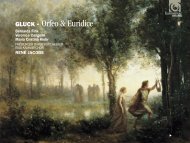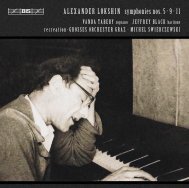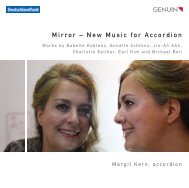Mise en page NUM - eClassical
Mise en page NUM - eClassical
Mise en page NUM - eClassical
You also want an ePaper? Increase the reach of your titles
YUMPU automatically turns print PDFs into web optimized ePapers that Google loves.
Martin pres<strong>en</strong>ts five of Ariel’s monologues and takes obvious<br />
pleasure in conveying every word and mood through his<br />
music; from the warm sands of the islands to the depths of<br />
the sea, Shakespeare’s ‘airy spirit’ dances, laughs, loses<br />
his temper…<br />
Only nine years separate the Four Madrigals from the Songs<br />
of Ariel, but the inspiration is quite differ<strong>en</strong>t here. Bohuslav<br />
Martinu (1890-1959) wrote this piece just a few months<br />
before his death. Drawing on folklore and traditional dances,<br />
he combines words and their sounds with very lilting<br />
rhythms, and favours the g<strong>en</strong>eral atmosphere of each piece,<br />
rather than choosing to use word-painting. Love and death<br />
are the subjects of these four gems, which combine the<br />
spirit of the R<strong>en</strong>aissance madrigal with an auth<strong>en</strong>tic folk<br />
tradition.<br />
ů<br />
Maurice Ravel (1875-1937) still continues to inspire many<br />
composers. Within his production, which includes<br />
masterpieces such as the ballet Daphnis et Chloé and the<br />
famous Boléro, the Trois Chansons, composed in 1915, are<br />
Ravel’s only contribution to the a cappella repertoire.<br />
Writing the texts himself, he joined the tradition of the<br />
Fr<strong>en</strong>ch polyphonic chanson, a readily light and naive g<strong>en</strong>re,<br />
while nevertheless mixing it with strong personal feelings<br />
about the horrors of war (especially in the middle piece,<br />
Trois beaux oiseaux du paradis), employing his great skill in<br />
the arts of harmony and transpar<strong>en</strong>t sound.<br />
Debussy or Ravel, he turned away from old poetry and<br />
towards that of his contemporaries Paul Éluard and<br />
Guillaume Apollinaire. From the bells in Marie to the calm,<br />
quiet harmonies of Belle et ressemblante, through all the<br />
colours of sunshine, light and shadow, Poul<strong>en</strong>c transforms<br />
and gives radiance to these surrealist poems, in which the<br />
feel of the words matters perhaps more than their actual<br />
meaning.<br />
A German composer of the first half of the tw<strong>en</strong>tieth<br />
c<strong>en</strong>tury, Paul Hindemith (1895-1963) was forced by the war<br />
to sp<strong>en</strong>d a few years in exile in Switzerland from 1938,<br />
before settling in the United States in 1940. He composed<br />
his Six Chansons in 1939, to poems by another German<br />
artist, also living in Switzerland, Rainer Maria Rilke (1875-<br />
1926). Tak<strong>en</strong> from the collection <strong>en</strong>titled Vergers, these six<br />
poems are devoted to the confrontation betwe<strong>en</strong> the poet's<br />
spirit and nature, in which he seeks answers. In writing<br />
these poems, Rilke complied with the requirem<strong>en</strong>ts and<br />
sounds of a differ<strong>en</strong>t language. Hindemith followed the<br />
same path and thus produced a cycle that is in fact close to<br />
the Fr<strong>en</strong>ch tradition, though also showing signs of Germanic<br />
culture. The result is a sober, contemplative and int<strong>en</strong>se<br />
work, depicting with refinem<strong>en</strong>t the mood of Rilke’s poems.<br />
Francis Poul<strong>en</strong>c (1899-1963), who composed almost a<br />
hundred and fifty songs, is perhaps one of the tw<strong>en</strong>tiethc<strong>en</strong>tury<br />
Fr<strong>en</strong>ch musicians best known to singers. He<br />
composed his Sept Chansons in September 1936, but unlike


